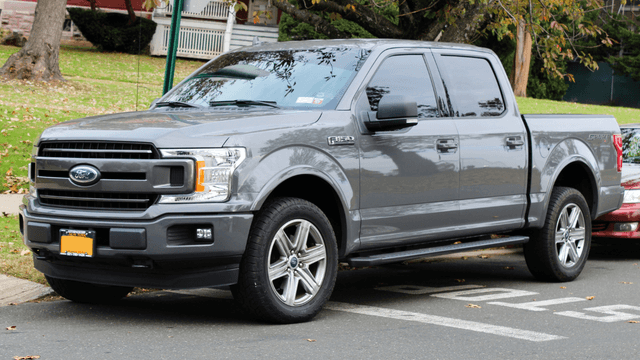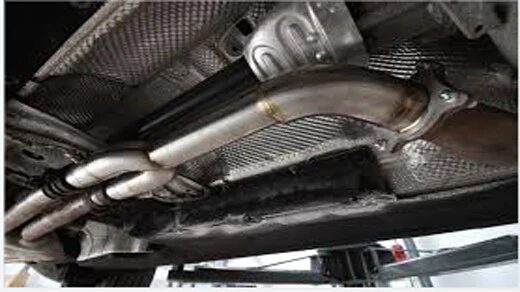Understanding Check Fuel Fill Inlet on Your Ford F-150: Causes and Solutions

When you’re driving your Ford F-150, a few things are as disconcerting as seeing a warning message light up on your dashboard. One such message that may appear is “Check Fuel Fill Inlet.” While it can be unsettling, it’s essential to understand what this warning means, what causes it, and how to address the issue. In this article, we’ll delve into the “Check Fuel Fill Inlet” message and provide you with the information you need to deal with it effectively.
Contents
What Does “Check Fuel Fill Inlet” Mean?
According to RoadRoverz.com, the “Check Fuel Fill Inlet” message on your Ford F-150 is a warning that there may be an issue with the fueling system. This message typically appears when there is a problem with the fuel filler neck or the associated components, which can impact your ability to refuel the vehicle properly.
The fuel filler neck is the part of the fueling system that connects the fuel cap to the fuel tank. It is a crucial component responsible for channeling fuel from the gas pump nozzle into the tank. When there’s a problem with the filler neck or related components, it can lead to difficulties in filling your tank or even result in fuel spillage.
Common Causes of “Check Fuel Fill Inlet”
Several factors can trigger the “Check Fuel Fill Inlet” message on your Ford F-150:
1. Fuel Filler Neck Blockage: One of the most common reasons for this warning is a blockage in the fuel filler neck. Debris, dirt, or other foreign objects can accumulate in the neck over time, obstructing the flow of fuel into the tank.
2. Damaged Fuel Filler Neck: Physical damage or corrosion to the fuel filler neck can also cause this issue. Corrosion may occur due to exposure to harsh weather conditions or road salt.
3. Faulty Fuel Cap: A damaged or improperly sealing fuel cap can trigger the warning message. It’s essential to ensure that the fuel cap is tightly sealed to prevent air from entering the fuel system.
4. Vent Valve or Evaporative Emissions System Issues: The vent valve, a component of the evaporative emissions system, plays a role in managing the pressure within the fuel tank. If this valve malfunctions, it can lead to difficulties during refueling.
5. Vapor Canister Issues: The vapor canister is responsible for storing fuel vapors from the fuel tank and releasing them when the engine is running. Problems with the vapor canister can impact the fueling process.
How to Address “Check Fuel Fill Inlet” on Your Ford F-150
Dealing with the “Check Fuel Fill Inlet” warning on your Ford F-150 involves a series of steps to diagnose and resolve the issue. Here’s a systematic approach to address the problem:
1. Check the Fuel Cap:
Begin by ensuring that the fuel cap is securely fastened. The cap should click when tightened, signifying a proper seal. If the cap is damaged, replace it with a new one. Clear any dirt or debris from the cap and its seal to ensure an airtight closure.
2. Inspect the Fuel Filler Neck:
Check the fuel filler neck for any visible damage or corrosion. If you notice signs of physical damage, it may need to be replaced. In the case of corrosion, consider having a professional inspect and address the issue.
3. Clear Any Blockages:
If there’s evidence of debris or blockages in the fuel filler neck, remove them carefully. You can use compressed air or a small brush to clear any obstructions.
4. Test the Vent Valve:
To test the vent valve and other components of the evaporative emissions system, it’s best to consult a professional mechanic or service center. They have the necessary equipment to diagnose and address issues in this system.
5. Evaluate the Vapor Canister:
Similar to the vent valve, issues with the vapor canister are best addressed by professionals. A trained mechanic can diagnose and repair problems in the evaporative emissions system effectively.
6. Clear the Warning Message:
After addressing the underlying issue, you may need to clear the warning message from your vehicle’s system. This is often done through an onboard diagnostics system or by disconnecting the vehicle’s battery for a brief period.
Preventive Measures and Maintenance
To minimize the likelihood of encountering the “Check Fuel Fill Inlet” warning on your Ford F-150, consider these preventive measures:
Regular Inspections: Periodically inspect the fuel filler neck and surrounding components for signs of damage or corrosion. Address any issues promptly to prevent them from becoming severe.
Keep it Clean: Maintain the cleanliness of the fuel filler neck and the fuel cap seal. Regularly clean the area to prevent debris or dirt from entering the fueling system.
Tighten the Fuel Cap: Always ensure that the fuel cap is securely fastened after refueling. A loose or improperly sealed cap can lead to the warning message.
Professional Maintenance: Regular servicing and maintenance by a certified mechanic can help identify and address potential issues in the fueling system before they become severe.
Conclusion
The “Check Fuel Fill Inlet” warning on your Ford F-150 is a signal that should not be ignored. It points to potential issues with the fuel filler neck or associated components, which can disrupt the refueling process and lead to further complications if left unattended. By understanding the common causes and following the steps for diagnosis and resolution, you can address the issue effectively. Additionally, practicing preventive measures and regular maintenance can help reduce the likelihood of encountering this warning in the future, ensuring a smooth and trouble-free driving experience in your Ford F-150.






